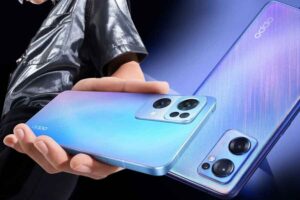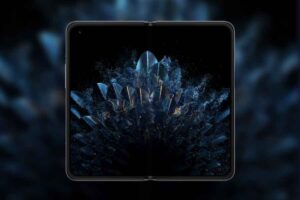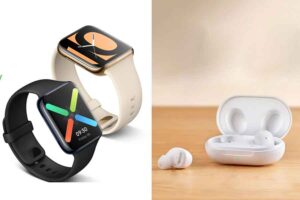A brand’s credibility lies in the quality, durability and innovation of its products, especially for ever-evolving smartphones. Oppo is one such brand that has taken product quality as a cornerstone of its sustainable, long-term development. The recent launch of Reno 7 series that offers an entirely novel experience and the company’s first foldable phone Find N shows how Oppo is always in the pursuit of offering something new with its device. Rollable is another concept Oppo is exploring, in terms of innovation and investment in the future of technology. Tasleem Arif, VP and R&D Head, Oppo India, shares in-depth insights on the importance of quality and testing and how smartphone brands can bring innovation to devices without compromising on quality, in an email interaction with Ramesh Kumar Raja. Excerpts:
Can you please tell us about the various quality tests that the smartphones go through to ensure maximum durability?
Smartphones are indispensable to most of our daily life, so they need to be capable of withstanding the wide variety of situations. To make sure Oppo’s devices can hold up to just about any challenge, the QE Reliability Lab is tasked with testing products against the strictest quality standards at all stages. Oppo products can only reach consumers if they have successfully passed this rigorous journey of 150 tests, which includes drop test, sandpaper test, environmental tests, mechanical stress tests, durability tests, performance tests and many more such as tumble test, waterproofing test, rain test, humid test, salt spray test, ESD (Electrostatic Discharge) test, temperature test, press test, USB plugging & bending test, Audio Test Lab, amongst others.
For instance, the USB input is tested by swinging the device from an attached USB cable 5,000 to 10,000 times using a 3kg force. With Oppo’s Environmental Work Test, this involves storing the phone at a low temperature, from as low as -40°C, to warm conditions at 75°C for 7 days (168 hours)– more than double the industry standard of 3 days (72 hours). The phone is also tested at intense humidity and temperature (95% humidity at 65°C) for 14 days (336 hours), which is also more than double the industry standard of 3 days (72 hours).
What is Oppo’s innovative approach to product testing?
Stability and reliability form the core foundations of an enjoyable smartphone experience. Aligned with our brand vision of Technology for Mankind, Kindness for the World, we have always taken product quality as a foundation of our sustainable, long-term development. Oppo tests its devices against stricter standards than most companies in the industry.
Our drop is set at a height of 1 meter, 25% higher than the industry standard of 0.8 meters. Oppo phones are dropped 28,000 times from a height of bed/table – which is considerably more than the 5,000-10,000 times typically adopted in the industry. Just like the drop tests, Oppo’s waterproofing test also undergoes extreme situations. While the common industry standard for water resistance is at IPX2, Oppo’s Rain Test adopts the IPX4 standard, simulating a “heavy” rainfall of 10±0.5 L/min.
We are committed to representing quality without compromise, and all our products result from tireless efforts towards quality testing. Oppo’s focus is to empower users with premium devices that can endure bumps and spills and even exceed users’ durability requirements.
Oppo Reno series makes a noise every time with its launch. What is Oppo’s focus on the quality of the device and how Reno 7 series is pushing all boundaries?
The Oppo Reno series has been constantly refreshing its appearance with every generation, offering a state-of-the art experience each time with Oppo Glow process finish. Also, the use of LDI (Laser Direct Imaging) technology on Oppo Reno 7 Pro 5G is the first time that Oppo itself has used laser engraving technology to perform additional precision processing on top of the Oppo Glow layer, making it more durable. With the latest Reno 7 series, along with the innovative look, Oppo is also setting new benchmarks for quality. To deliver industry-leading reliability experience, our Reno 7 series smartphones is subjected to one of the most vigorous testing processes in the industry that are designed to evaluate how the devices will perform during normal day-to-day use.
Also Read: Oppo Find N Review: A foldable phone with crease-free display.
For instance, to test the water resistance, the Reno 7 series was tested underwater at a depth of 20 centimetres for 30 seconds. To test the phone’s USB and headphone inputs, USB cables and headphone jacks were inserted 10,000 times each, at varying angles. Further, Oppo OTA Lab conducts rigorous tests on the radiation efficiency of the phone’s antennas and on the various network bands including 5G to ensure its seamless trouble-free operability, anywhere in the country.
| “With the latest Reno 7 series, along with the innovative look, Oppo is also setting new benchmarks for quality. To deliver industry-leading reliability experience, our Reno 7 series smartphones is subjected to one of the most vigorous testing processes in the industry that are designed to evaluate how the devices will perform during normal day-to-day use” |
How is Reno series enhancing the iconic Oppo Glow with LDI innovation?
Oppo’s exclusive Oppo Glow glass manufacturing process has been a central part of the overall design of the Reno series. The Reno 7 series has set a new milestone in smartphone aesthetics with proprietary Oppo Glow design that incorporates aircraft-grade Laser Direct Imaging (LDI) technology. It is the first time LDI has ever been applied to the exterior design of a mobile device. It is also the first time that Oppo itself has used laser engraving technology to perform additional precision processing on top of the Oppo Glow layer.
The Process Lab team of over 100 experts challenged the limits of precision for the LDI process, designing their own laser etching patterns as they repeatedly enhanced the textured effect. Over 3,000 test sample adjustments were made to the thickness, angle, and pattern of the micro-rasters until the process was capable of creating the articulate visual and textural quality envisioned by Oppo on the Reno 7 series.
LDI is used to design PCBs in the aviation industry. Our engineers worked for three years to repurpose the “aircraft-grade” LDI, which is used to create 1.2 million micro-etchings with a width of 20 microns across the surface of the back cover. This creates a visual and textural illusion of shooting stars streaming across the device that shine and fade into the black galaxy as the phone is held in the hand. In addition to its shimmering visual effect, the use of LDI also adds a physical texture to the surface of the cover, creating a sensation like ultra-fine strands of hair flowing in the wake of the meteor shower. This refreshing visual, tactile, and textural sensation is a completely new experience for smartphone users.
Tell us more about the new-generation RGBW sensor in Reno 7?
RGBW technology has become one of the main approaches in the field of image technology in recent years. However, due to problems such as manufacturing process, the limited computational power of the sensors, and signal crosstalk, images taken using traditional RGBW pixel array sensors are often prone to chromatic aberrations and false colours. Therefore, RGBW sensors have never been considered the mainstream option for enhancing sensor sensitivity.
Oppo never stopped and continued their research in sensor technologies to find the best way to increase light sensitivity. As a result of its continued efforts, Oppo has collaborated with Sony and co-designed industry’s first exclusive 32MP IMX709 selfie camera sensor and 50MP IMX766 flagship rear camera sensor for Reno 7. The IMX709 is a customized RGBW (red, blue, green, white) front image sensor that can capture crisper and more evenly exposed photos and videos; it is 60% more sensitive to light and reduces noise by 30% when compared to traditional RGB sensors. This makes it one of the best cameras to shoot with, when indoors or in low-light settings. Furthermore, Oppo has optimized the algorithms to reconstruct the Bokeh light spot in a way that is similar to DSLR cameras.
| “Oppo has collaborated with Sony and co-designed industry’s first exclusive 32MP IMX709 selfie camera sensor and 50MP IMX766 flagship rear camera sensor for Reno 7. The IMX709 is a customized RGBW (red, blue, green, white) front image sensor that can capture crisper and more evenly exposed photos and videos; it is 60% more sensitive to light and reduces noise by 30% when compared to traditional RGB sensors” |
Foldable phone from the house of Oppo is a reality now. How do you look at this development?
Find N, our first foldable flagship smartphone, is a result of four years of intense R&D and 6 generations of prototypes. This device is Oppo’s answer to the future of smartphones and our team has been truly excited about it. In the past, smartphone evolution focused on the display panel, first combining a small display with a big keyboard, and evolving to today’s full-screen smartphones. But in an era where everyone has a phone with similar configurations, the smartphone experience has come to a standstill. So, manufacturers are finding a way to break through the bottleneck of smartphone displays.
Also, Read Here: Oppo joins Hasselblad for its upcoming next-gen flagship: What to expect?
Oppo realized this four years ago, and since then the team has worked tirelessly to find a creative solution. Oppo has always dared to venture into the unknown to look for breakthroughs and innovative answers, while also exercising restraint when it comes to impacting the user experience. For Oppo, it is better to launch a product later when it is ready to offer a great user experience instead of simply rushing to keep up with trends. With the Oppo Find N, we are optimistic to change people’s perceptions about what a smartphone can offer and begin making foldable devices more accessible to an even larger audience.
What makes Oppo Find N different from others in the foldable segment? When are you coming with another foldable device?
Smartphone technology has entered an era of limitless innovation with new form factors ushering in an exciting new time. Though the foldable device has been previously released to the market, issues such as utility, durability, and user experience continue to impede foldable devices from being a more viable daily driver for most consumers.
Oppo has invested a significant amount of time and effort into coming up with a better approach to a foldable smartphone, experimenting with a range of form factors, hinge designs, display materials and aspect ratios, to create a new device that meets the needs of more users. The device seamlessly engineered with over four years, six generation of prototypes and 448 patents is a proof of our constant effort and determination in providing our users the best experience.
The Flexion Hinge on the Oppo Find N brings together 136 components ensuring a smooth fold. Oppo’s unique water-drop hinge design solves some of the biggest pain points in foldable devices by widening the angle of the fold in the display and offering a buffer when the display folds, resulting in a minimal crease as compared with other devices.
The landscape aspect ratio of the inner display makes the experience of reading, watching videos or playing games incredibly seamless. With a range of software features that take advantage of the folding display, FlexForm Mode on the Oppo Find N gives users the flexibility to adapt the device to a wide range of usage scenarios. Oppo Find N can convert into a mini laptop allowing users to take notes without holding the device. Since the Find N can freely stand at various angles, the device also serves as its tripod, making 4K HD time-lapse imaging, video calls and online meetings easy and hands-free. Technology enthusiasts have appreciated the device, creating much enthusiasm worldwide.
| “Oppo has invested a significant amount of time and effort into coming up with a better approach to a foldable smartphone, experimenting with a range of form factors, hinge designs, display materials and aspect ratios, to create a new device that meets the needs of more users. The device seamlessly engineered with over four years, six generation of prototypes and 448 patents is a proof of our constant effort and determination” |
Are foldable the future of smartphones? How geared up Oppo is to cash in on the evolving trend?
Foldable smartphones allow its users to its expanding nature, and can be used as a phone, tablet and even a PC. Hence, they may no longer require three separate devices to use for different types of purposes. It also provides enhanced user experience for other day-to-day activities like gaming, watching, reading, etc. They are game changers for what people can expect from a smartphone. With evolving and growing consumer needs, foldables can be the future of smartphone. Our latest Find N is a clear example of what future holds in the foldable segment.
Besides foldable, where is mobile design heading in 2022?
With the ever-increasing homogenization of mobile phone designs and the relative maturity of film deposition technology, phone manufacturers are increasingly applying coating process innovations to the back covers of their phones. As a pioneer of the AG process, Oppo’s exclusive Oppo Glow glass manufacturing process has been a central part to the overall design of the Reno series. As the design language of the smartphones becomes increasingly mature, Oppo brings with it a revolutionary, eye-catching appearance inspired by nature and built with innovative craftsmanship. While bringing to life the natural spectacle of star trails, the Reno 7 series also meets user needs when it comes to other details such as durability, weight, and size.
Read Here: Oppo announces strategic partnership in Mobile Imaging with Hasselblad.
Slim design phones are yet another trend that will continue to thrive in 2022. Since the very first Oppo Reno device, the series’ thin and lightweight design has been its conceptual foundation and a core part of its appeal and Reno 7 series has continued the tradition.
Looking ahead, smartphone manufacturers will continue to develop more exclusive innovations in their product design philosophy. Hence, innovation with new designs and improvising the existing to integrate the perfect combination of innovation, capabilities, and experience will be Oppo’s focus for 2022.
Are we also going to see phones with rollable form factors in the near future?
Rollable concept handset is one of the achievements of Oppo’s R&D in flexible display and structural stacking, bringing users more natural interactive experience. Oppo’s concept devices showcase our forward-looking exploration and innovation and investment in future of technology. Through the development of concept products like rollable, Oppo continues to accumulate technology, patent layout, team, and knowledge base. We will keep you posted on any announcements regarding the products’ availability.
| “Rollable concept handset is one the achievements of Oppo’s R&D in flexible display and structural stacking, bringing users more natural interactive experience. Oppo’s concept devices showcase our forward-looking exploration and innovation and investment in future of technology. Through the development of concept products like rollable, Oppo continues to accumulate technology, patent layout, team, and knowledge base” |
Is there any chance of slide phones to bounce back with a new form factor?
Smartphone industry is heading towards innovative solutions beyond imagination of a layman. To support more functionality, smartphone is designed in a constant increasing of size, making it difficult to hold and less convenient. This trend towards larger phones has become a growing concern for users. Hence, Oppo showcased the “slide-phone” conceptual designs at one of the events that we have been working on together with the leading Japanese industrial designing studio nendo.
There are a lot of innovations going on in the wearables and hearables sector. Where do you plan to move in this sector in 2022?
IoT is one of the key focus areas for the Oppo and we have introduced multiple products in the hearables and wearables segment including Oppo Watch, smart band and Oppo Enco Buds and Band. One of our recent launches is Oppo’s new neckband-style earbuds in India, called Enco M32 which provides up to 28 hours of listening time after a flash charge of 35 minutes. They are fitted with Bluetooth 5.0 low-latency transmission technology to remain connected to two smartphones or tablets at the same time. The device is IP55 certified dust and water-resistant and have multi-function button, for managing calls and activating voice assistants, and volume rockers have been placed at the right side of the earphones.
On our journey to limitless innovation, we have an exciting product line-up planned for our Indian customers in 2022. We will be sharing related communication soon.
Read Here: Oppo Find X5, Find X5 Pro confirmed to be launched on Feb. 24: Expected specs and more.




